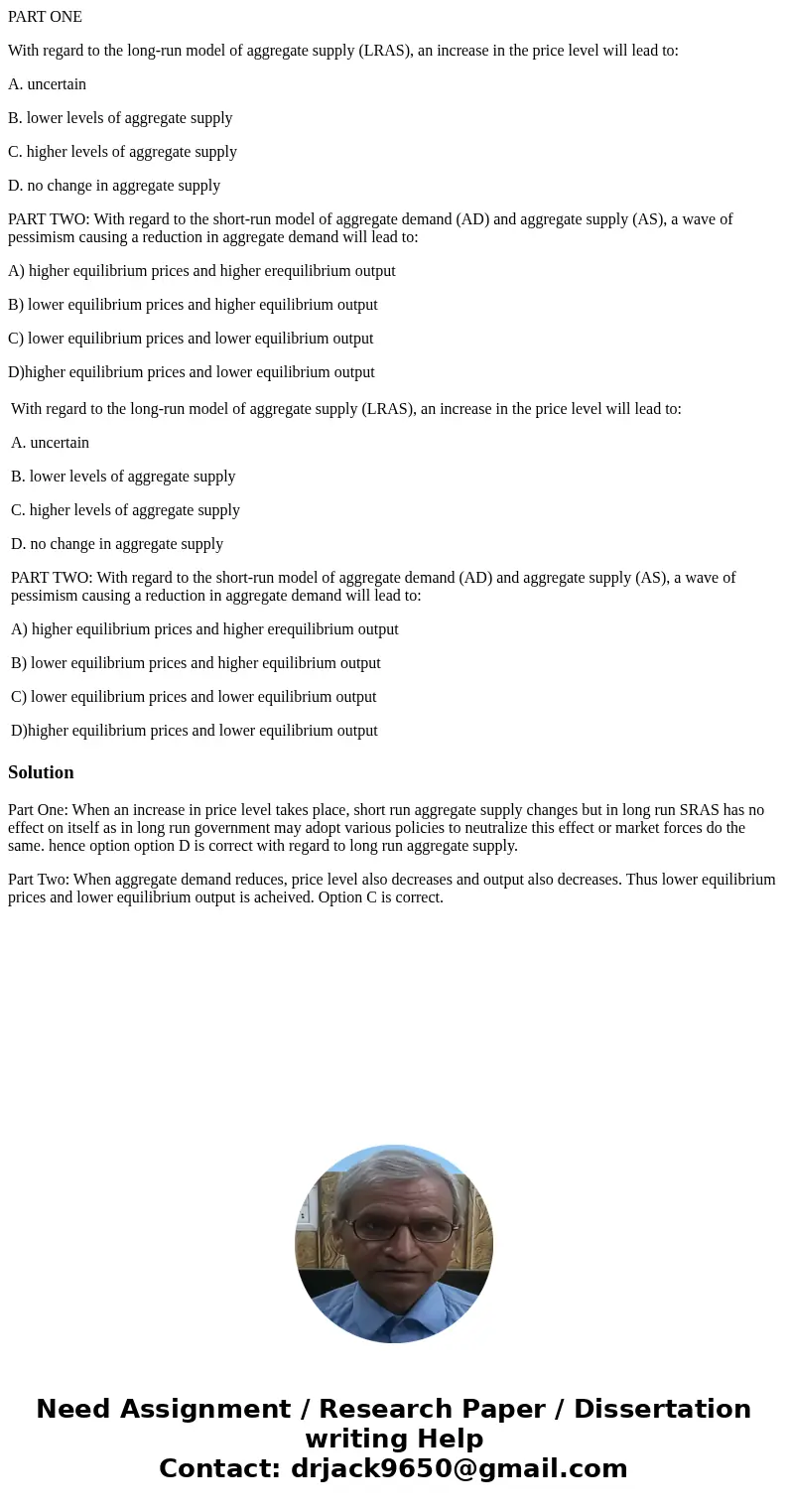PART ONE With regard to the longrun model of aggregate suppl
PART ONE
With regard to the long-run model of aggregate supply (LRAS), an increase in the price level will lead to:
A. uncertain
B. lower levels of aggregate supply
C. higher levels of aggregate supply
D. no change in aggregate supply
PART TWO: With regard to the short-run model of aggregate demand (AD) and aggregate supply (AS), a wave of pessimism causing a reduction in aggregate demand will lead to:
A) higher equilibrium prices and higher erequilibrium output
B) lower equilibrium prices and higher equilibrium output
C) lower equilibrium prices and lower equilibrium output
D)higher equilibrium prices and lower equilibrium output
| With regard to the long-run model of aggregate supply (LRAS), an increase in the price level will lead to: A. uncertain B. lower levels of aggregate supply C. higher levels of aggregate supply D. no change in aggregate supply PART TWO: With regard to the short-run model of aggregate demand (AD) and aggregate supply (AS), a wave of pessimism causing a reduction in aggregate demand will lead to: A) higher equilibrium prices and higher erequilibrium output B) lower equilibrium prices and higher equilibrium output C) lower equilibrium prices and lower equilibrium output D)higher equilibrium prices and lower equilibrium output |
Solution
Part One: When an increase in price level takes place, short run aggregate supply changes but in long run SRAS has no effect on itself as in long run government may adopt various policies to neutralize this effect or market forces do the same. hence option option D is correct with regard to long run aggregate supply.
Part Two: When aggregate demand reduces, price level also decreases and output also decreases. Thus lower equilibrium prices and lower equilibrium output is acheived. Option C is correct.

 Homework Sourse
Homework Sourse